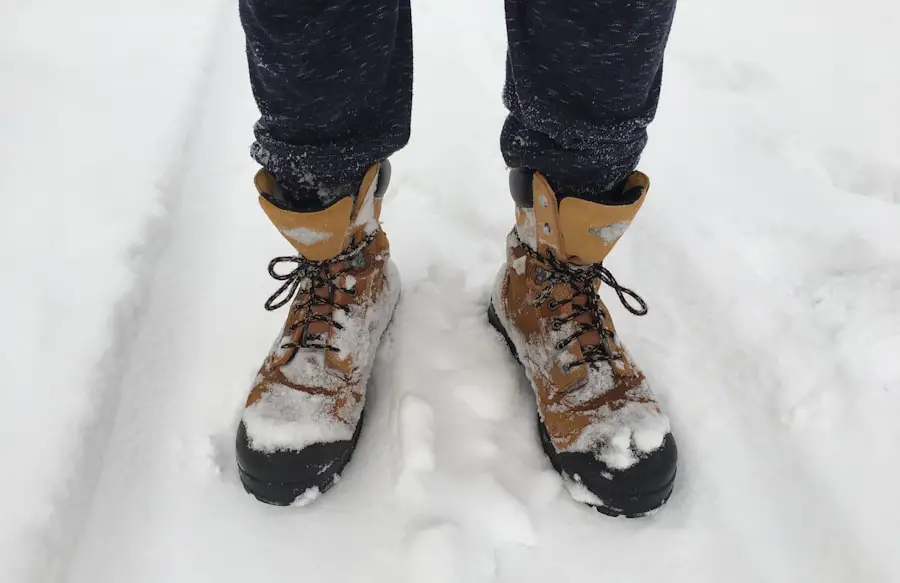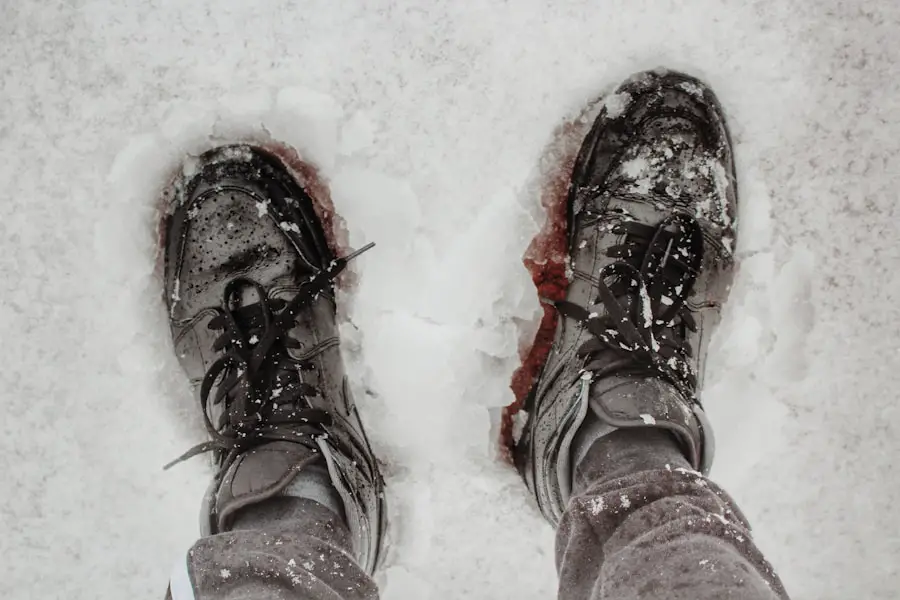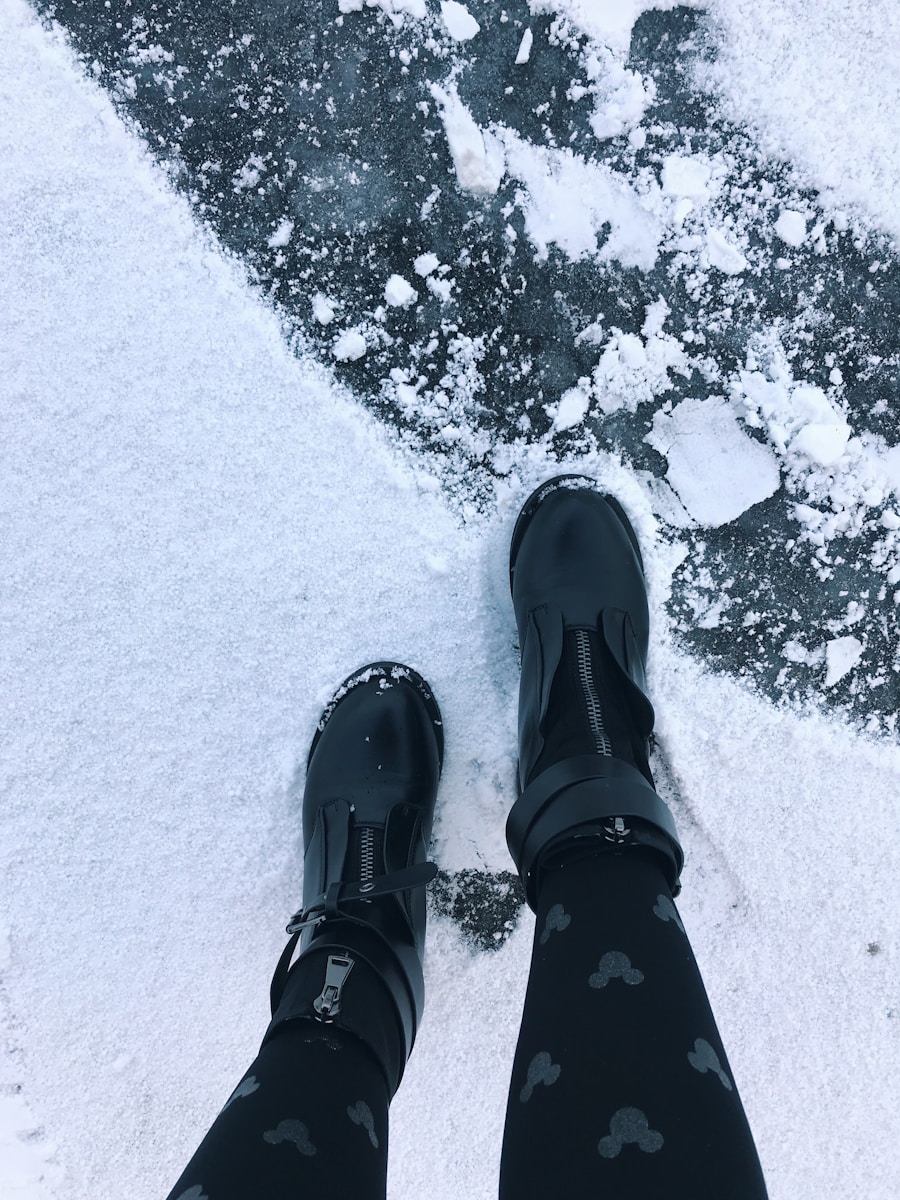Hiking boots are an essential piece of gear for outdoor enthusiasts, particularly for those who venture into snowy terrains. The right pair of hiking boots can significantly enhance the experience of traversing winter landscapes, providing not only comfort but also safety and stability. Snow-covered trails present unique challenges, including slippery surfaces, cold temperatures, and the potential for deep snow.
Therefore, understanding the role of hiking boots in these conditions is crucial for anyone looking to explore the great outdoors during winter months. The design and construction of hiking boots are tailored to meet the demands of various terrains, and when it comes to snow, specific features become paramount. Insulation, waterproofing, traction, and support are just a few of the characteristics that differentiate winter hiking boots from their summer counterparts.
As winter approaches, many hikers find themselves questioning whether their existing footwear is adequate for snowy conditions or if they need to invest in specialized boots. This article delves into the benefits of hiking boots in snow, the types available, considerations for selection, proper usage, alternatives, maintenance tips, and ultimately addresses the question of their suitability for snowy adventures.
Key Takeaways
- Hiking boots are essential for navigating snowy conditions, providing traction and support for hikers.
- The benefits of hiking boots in snowy conditions include insulation, waterproofing, and ankle support.
- Types of hiking boots suitable for snow include insulated, waterproof, and high-cut designs for added protection.
- When choosing hiking boots for snow, consider factors such as insulation, waterproofing, traction, and fit.
- Properly using hiking boots in snow involves wearing moisture-wicking socks, using gaiters, and adjusting lacing for a secure fit.
Benefits of Hiking Boots in Snowy Conditions
One of the primary benefits of wearing hiking boots in snowy conditions is their ability to provide insulation against the cold. Many winter hiking boots are designed with materials that trap heat while allowing moisture to escape, keeping your feet warm and dry even in frigid temperatures. This is particularly important because cold feet can lead to discomfort and even frostbite in extreme conditions.
For instance, boots with Thinsulate or similar insulation technologies can maintain warmth without adding excessive bulk, allowing for better mobility on the trail. Another significant advantage is the enhanced traction that specialized hiking boots offer on slippery surfaces. Snow and ice can create treacherous conditions, making it easy to lose footing.
Hiking boots designed for winter use often feature aggressive outsoles made from rubber compounds that provide superior grip on icy or snowy terrain. For example, Vibram outsoles are commonly used in winter hiking boots due to their excellent traction properties. This feature not only boosts confidence while navigating challenging trails but also reduces the risk of falls and injuries.
Types of Hiking Boots Suitable for Snow

When selecting hiking boots for snowy conditions, it is essential to understand the different types available on the market. One popular category is insulated hiking boots, which are specifically designed to keep feet warm in cold weather. These boots often feature thick insulation materials and are typically waterproof to prevent snow from seeping in.
Brands like Salomon and Merrell offer models that combine insulation with lightweight materials, making them ideal for long hikes in snow. Another type is the mountaineering boot, which is built for extreme conditions and technical terrain. These boots are often stiffer than regular hiking boots and provide excellent ankle support, making them suitable for climbing icy slopes or traversing deep snow.
They usually come with features such as crampon compatibility, which allows hikers to attach spikes for additional grip on icy surfaces. For example, the Scarpa Mont Blanc is a well-regarded mountaineering boot that excels in snowy environments. Additionally, there are hybrid options that combine features from both insulated hiking boots and mountaineering boots.
These versatile designs cater to a broader range of activities, from casual winter hikes to more demanding alpine adventures. The versatility of these hybrid boots makes them a popular choice among hikers who may encounter varying conditions throughout their journey.
Considerations for Choosing Hiking Boots for Snow
| Consideration | Description |
|---|---|
| Insulation | Look for boots with Thinsulate or other insulation to keep your feet warm in the snow. |
| Waterproofing | Choose boots with a waterproof membrane to keep your feet dry in snowy conditions. |
| Traction | Opt for boots with aggressive tread patterns and rubber soles for better grip on snow and ice. |
| Height | Consider higher boots that provide ankle support and keep snow out of your boots. |
| Fit | Ensure a snug fit to prevent blisters and provide better control on uneven terrain. |
Selecting the right hiking boots for snowy conditions involves several critical considerations. First and foremost is fit; a well-fitting boot is essential for comfort during long hikes. It’s important to try on boots with the socks you plan to wear during your hikes to ensure a proper fit.
A boot that is too tight can cause blisters and discomfort, while one that is too loose may lead to instability and lack of support. Waterproofing is another crucial factor when choosing hiking boots for snow. Snow can quickly turn into slush or water as it melts, so having a boot that keeps your feet dry is vital.
Look for boots made with waterproof materials such as Gore-Tex or those with sealed seams that prevent moisture from entering. Additionally, consider the height of the boot; taller models provide extra protection against snow entering from above and can help keep your ankles warm. Insulation levels should also be taken into account based on the expected temperatures during your hikes.
If you plan to hike in extremely cold conditions, opt for boots with higher insulation ratings. Conversely, if you expect milder temperatures or plan on engaging in high-energy activities like snowshoeing, a less insulated boot may suffice.
How to Properly Use Hiking Boots in Snow
Proper usage of hiking boots in snowy conditions can significantly enhance performance and safety on the trail. Before heading out, it’s advisable to break in new boots by wearing them on shorter hikes or around the house. This helps prevent blisters and ensures that your feet are accustomed to the fit and feel of the footwear.
When hiking in snow, it’s essential to pay attention to your gait and foot placement. Take shorter strides to maintain balance and reduce the risk of slipping on icy patches. If you encounter deep snow, consider using snowshoes or gaiters in conjunction with your hiking boots to keep snow out and improve mobility.
Gaiters can be particularly useful as they cover the gap between your pants and boots, preventing snow from entering. Additionally, be mindful of temperature changes throughout your hike. If you start to feel too warm, it may be beneficial to adjust your socks or loosen your laces slightly to allow for better airflow.
Conversely, if you notice your feet getting cold, take breaks to warm them up by moving your toes or adjusting your socks as needed.
Alternatives to Hiking Boots for Snow

While hiking boots are often the go-to choice for snowy conditions, there are alternatives that may be more suitable depending on specific activities or personal preferences. One popular alternative is winter-specific footwear such as insulated snow boots or winter hikers designed explicitly for cold weather use. These boots typically offer excellent insulation and waterproofing but may lack some of the support features found in traditional hiking boots.
Another option is cross-country ski boots or snowshoeing footwear designed for those activities specifically. These types of footwear often provide a different fit and flexibility level tailored to skiing or snowshoeing movements. They may not be ideal for traditional hiking but can be excellent choices if you plan on engaging in those specific winter sports.
For casual winter walks or light hikes on well-groomed trails, waterproof trail runners can also serve as an alternative. While they may not provide as much insulation as dedicated winter boots, they can be suitable for milder conditions where deep snow is not a concern.
Tips for Maintaining Hiking Boots in Snowy Conditions
Maintaining hiking boots used in snowy conditions is crucial for ensuring their longevity and performance over time. After each hike, it’s essential to clean off any snow or mud that may have accumulated on the exterior of the boots. Use a soft brush or cloth to remove debris gently; this prevents dirt from damaging the materials and helps maintain waterproofing.
Drying your boots properly after exposure to moisture is equally important. Avoid placing them near direct heat sources like radiators or fireplaces, as this can cause materials to crack or warp. Instead, remove the insoles and let them air dry at room temperature.
Stuffing your boots with newspaper can help absorb moisture more effectively while maintaining their shape. Regularly treating your hiking boots with appropriate waterproofing sprays or waxes can also extend their lifespan. These treatments help restore water repellency and protect against salt stains that often occur when walking through slushy conditions.
Additionally, inspect your boots periodically for signs of wear and tear; addressing issues like loose seams or worn-out soles promptly can prevent more significant problems down the line.
Are Hiking Boots Good for Snow?
In summary, hiking boots can be an excellent choice for snowy conditions when selected and used appropriately. Their design features—such as insulation, waterproofing, and traction—make them well-suited for navigating winter trails safely and comfortably. However, it’s essential to choose the right type based on individual needs and expected conditions while also considering alternatives when necessary.
Ultimately, whether you’re embarking on a casual winter hike or tackling more challenging snowy terrain, investing in a quality pair of hiking boots tailored for winter use can significantly enhance your outdoor experience during colder months. With proper care and maintenance, these boots can serve you well through many seasons of adventure in snow-covered landscapes.
If you are planning a winter hiking trip and wondering if hiking boots are good in the snow, you may also want to consider investing in a rechargeable hand warmer for travel. This handy device can keep your hands warm and toasty while trekking through the snow-covered trails. Check out this article on the best rechargeable hand warmers for travel to find the perfect one for your next snowy adventure.
FAQs
Are hiking boots good in the snow?
Yes, hiking boots are generally good in the snow as they provide ankle support, traction, and insulation to keep your feet warm and dry.
What features should I look for in hiking boots for snow?
When choosing hiking boots for snow, look for features such as waterproofing, insulation, a high ankle collar for support, and a durable outsole with deep lugs for traction.
Can I use regular hiking boots in the snow?
Regular hiking boots can be used in light snow conditions, but for more extreme snow and cold, it’s best to choose hiking boots specifically designed for snow and winter conditions.
How do I maintain hiking boots for snow use?
To maintain hiking boots for snow use, regularly clean off any snow and mud, apply waterproofing treatment as needed, and store them in a cool, dry place to prevent damage from moisture.
Can I use hiking boots for snowshoeing?
Yes, hiking boots can be used for snowshoeing, but it’s important to ensure they have good traction and are compatible with the bindings of the snowshoes. Some hikers prefer to use specific snowshoeing boots for added warmth and protection.
